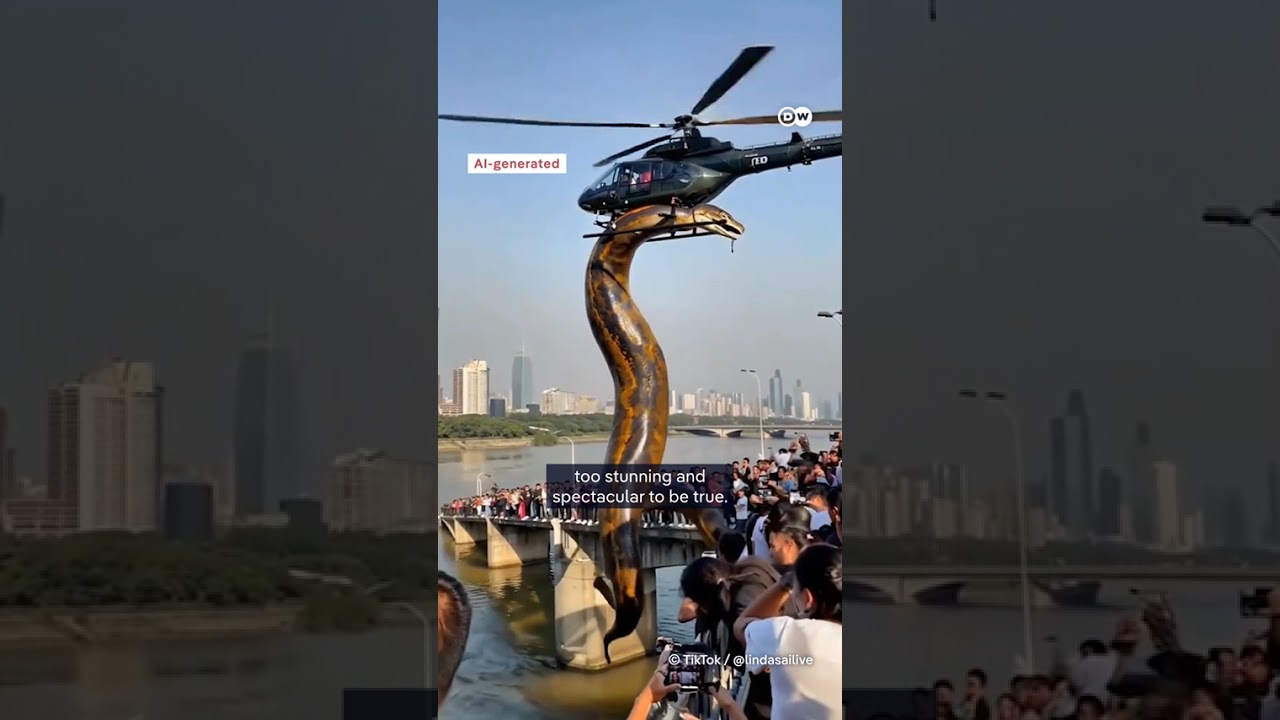The DW News video explains how AI-generated videos are becoming increasingly convincing and highlights key signs—such as unrealistic appearances, inconsistencies, and unnatural movements—that can help viewers identify fake footage. It emphasizes the importance of critical viewing and verifying content before sharing, especially during breaking news, to prevent the spread of misinformation.
The video from DW News discusses the increasing prevalence of AI-generated videos and the challenges they pose in distinguishing real footage from fake. It highlights that advanced AI technology can produce highly convincing videos that are difficult to identify as fabricated, making it essential for viewers to develop critical viewing skills. The examples given include videos claiming to show a giant anaconda in the Amazon River, a massive fire in Los Angeles, and an Indian jet shot down by Pakistani forces—all of which are confirmed to be AI-generated and not real events.
The video emphasizes that these AI-created videos often appear overly spectacular or unrealistic, which can serve as a clue for viewers. When something looks too extraordinary or perfect, it’s worth questioning its authenticity. This initial step involves assessing whether the content seems plausible or if it has an overly polished or exaggerated appearance that might indicate artificial creation.
Another key tip provided is to look for inconsistencies within the videos. AI-generated content often exhibits anomalies such as objects or people suddenly appearing or disappearing, or changing shape unexpectedly. These irregularities can be subtle but are important indicators that the footage may not be genuine. Paying close attention to these details can help viewers identify fabricated videos more effectively.
The third tip focuses on analyzing movement patterns within the videos. AI-generated videos may feature unnatural or bizarre movements, such as people walking like zombies or vehicles moving in illogical directions. These odd motion patterns often violate the laws of physics or common sense, serving as strong signs that the footage has been artificially created. Recognizing these cues can help viewers differentiate between real and fake videos.
Finally, the video warns that AI-generated videos tend to spread rapidly during breaking news events, which can contribute to misinformation. It advises viewers to be cautious and to verify the authenticity of videos before sharing them. The overarching message is that if something seems too good to be true, it probably is, and taking the time to fact-check can prevent the spread of false information.
